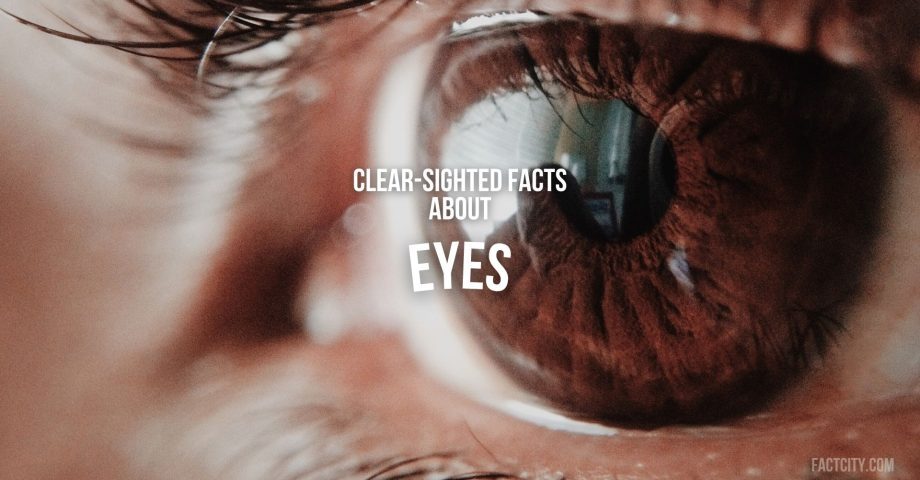10 Clear Sighted Facts about Eyes
We all take them for granted – but do you know just how impressive your eyes are? We mean that scientifically, of course! The human eye is an incredibly complex organ that’s super-sensitive and full of secrets. We’re going to uncover plenty of them today, so sit tight and take a look at our fun facts about eyes!
1. Human eyes don’t need to rest.
You’ve probably heard the phrase “rest your eyes” a few times before. However, it’s a bit of a misconception. That’s because human eyes are so sophisticated and hard-working, they can function without any need for rest or notice. So, even if you wake up feeling blurry-eyed some days, your eyes are working at capacity!
2. Blue and green eyes transcend generations.
Although eye color is often a clear indicator of who your parents are, believe it or not, some colors can skip generations – several at a time, sometimes! Believe it or not, even if the last two or three generations of your family had brown eyes, you can still have children with green or blue eyes – they’re recessive traits.
3. Eyes are mostly made of jelly.
As gross as it sounds, around 80% of the human eye is jelly. At least, it’s jelly-like – it’s actually made from vitreous humor, which is mostly water. Your eyes are made up of this substance so they can easily retain shape and keep your retinas safe.

4. Most people can see millions of colors.
Although color blindness is a very real phenomenon affecting many people, it’s thought the human eye can see up to ten million colors by default. Good luck naming the first million!
5. Security experts prefer using eye biometrics over fingerprints.
It’s true that fingerprints are unique and are therefore useful when designing security systems and access points – but did you know that the human iris is considered more secure? That’s because compared to the 40 unique characteristics of your fingerprints, your irises have a staggering 256 different characteristics.
6. Owls aren’t able to move their eyes at all.
Owl eyes are seriously impressive – but did you know that they’re unable to move them independently? It’s because they’re not actually eyeballs – they’re tubes that run to the backs of their skulls. Therefore, to get a wider field of view, owls need to move their heads – which is why they can swivel them around so easily!
7. We have two eyes for a reason.
Humans have evolved with two eyes each because with just one, we wouldn’t have any depth perception. We need two eyes at different angles so our brains can measure how far things are away from each other.
8. Animals didn’t always have eyes.
And, admittedly, millions of species still don’t! Bizarrely, the human species didn’t start with eyes as we know them today. In fact, they first started evolving in ancient specimens more than 500 million years ago, according to estimates. These specimens were one-cell organisms with light detecting proteins.
9. Some animals have more eyes than you’d expect.
It’s common to see spiders with eight eyes – but did you know that a scorpion can have up to 12? All the more reason not to sneak up behind one! Beating that score even further, however, is the impressive box jellyfish – it can have up to 24 eyes to help navigate the waters.

10. We don’t start seeing colors properly for a few months into life.
While we’re typically born being able to see colors, human babies can’t tell the difference between colors such as green and red until they’re a few months old. It’s because our photoreceptor cones take extra time to develop.
FAQs about Eyes
What are some of the most serious eye conditions?
Some serious eye problems include cataracts and glaucoma, which can lead to loss of vision if left untreated over time.
What are the floaters in the eyes?
Eye floaters are actually shadows! They’re cast by fibers of collagen in your eyes’ vitreous humor.
What does it mean to have a lazy eye?
A lazy eye is one that the brain struggles to recognize in coordination with the other. It’s effectively the loss of vision in one eye, though not always to a full extent.
Further reading
https://factcity.com/tag/Anatomy
https://www.webmd.com/eye-health/picture-of-the-eyes
https://www.nei.nih.gov/learn-about-eye-health/healthy-vision/how-eyes-work
Do you know any fun facts about eyes? Share them in the comments section below!
This page was last modified on January 6, 2024. Suggest an edit









